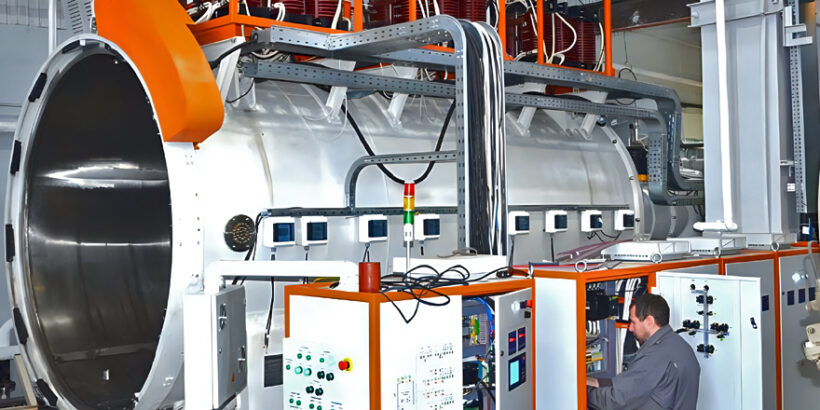Vacuum annealing of titanium alloys is a critical step in the manufacturing of titanium products, weldments and other highly stressed parts. The process improves ductility, increases impact toughness, relieves process stress and aligns the crystalline structure of the material, resulting in improved quality and reliability of the products.
A new PV-900 furnace for vacuum annealing of titanium alloys was installed in Shop 233 of the Irkutsk Aviation Plant; it is a more advanced version of the furnace that has been in operation in the shop since 2020. The main nomenclature of processed products is large-sized parts with special strength requirements. They bear the main load in the overall structure of the aircraft airframe. These are, for example, elements of the MS-21 centreplane, Su-30 spandrels, and panels of protective devices.
The purchase of new equipment is part of the investment programme for the serial production of MS-21. In 2020, the shop has already received one PV-900 furnace, soon its improved analogue manufactured by JSC Electromechanika from Rzhev in the Tver region will start working in the division.
“After machining and welding, the parts come to us,” explains the peculiarities of the technological process, Victor Tolstikov, the site foreman. – The heat-treaters put them on special tooling and send them on a trolley to the vacuum chamber. Pumps pump out air from there, creating an almost “cosmic” environment inside. Then the parts are heated – the temperature range varies from 650 to 820 degrees Celsius. In this mode they are kept from 1.5 to 2.5 days,” said in the telegram channel Notes of Aircraft Builders.
As a result of vacuum annealing, the plasticity of titanium products improves, impact toughness more than doubles, technological stress is removed, and the crystalline structure of the material is levelled. After annealing, the parts take the shape that is stipulated by the design documentation and technological process.


